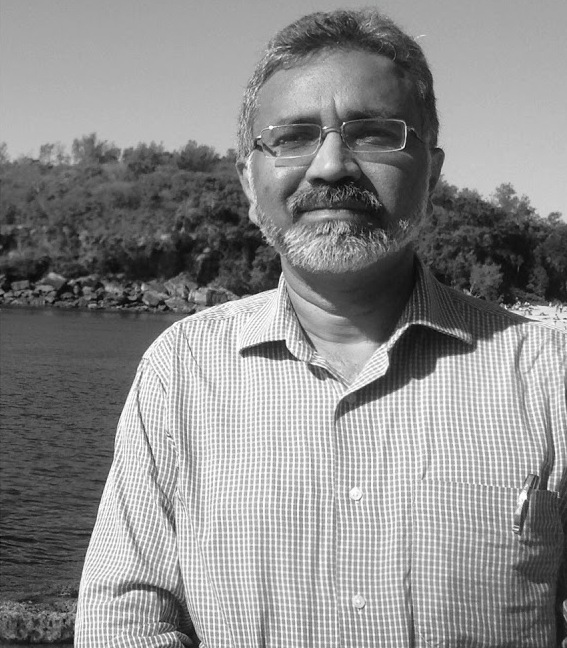Early Indians: The Story of Our Ancestors and Where We Came From
Open Health Systems Colloquium Indian Prehistory: How a multidisciplinary approach involving population genetics, archaeology and linguistics is solving some of the oldest problems and can be used to solve many more
On 10th July, 2019, a discussion was held by Open Health Systems Colloquium on “Indian Prehistory: How a multidisciplinary approach involving population genetics, archaeology and linguistics is solving some of the oldest problems and can be used to solve many more” at India International Centre 40, Max Mueller Marg, New Delhi. The discussion was opened by Dr. Koninika Ray, Director, Biomedical Research Open Health Systems Laboratory and chaired by honorable Prof. Partha P Majumder, and co-chaired by Prof. Kenneth H Buetow, Kailash N Shrivastava (Director IIC), and Tony Joseph, Journalist & former editor of Business World magazine.
It was discussed at the gathering that India was at the centre of Paleolithic (Stone Age), Neolithic (New Stone Age), and Bronze Age migrations. Developments in population genetics in the past few decades have made it possible to extract and sequence DNA from ancient individuals to bolster this assertion. However, effectively pollinating ideas across disciplines to scientifically corroborate prehistoric events is new.
Open science and team science are the new paradigms to collaborate, explore, and generate knowledge unbound. Science in silos is passé believes Open Health Systems Laboratory (OHSL)—an initiative that builds international open collaborations around life sciences. In pursuit of this approach, OHSL nurtures open discussions on current and emerging developments.
A recent edition of the Open Health Systems Colloquium—a collaboration between OHSL and the India International Centre (IIC)—brought together Journalist Tony Joseph, Prof. Partha P. Majumder, Professor, Founder, National Institute of Biomedical Genomics Institute, West Bengal; Kenneth Beutow, School of Life Sciences, Arizona State University; and Kailash N. Shrivastava, former director general of the Archaeological Survey of India.
Mr. Kailash N Shrivastava, Director, India International Centre, gave an introductory address and spoke about the book and the perspective it has been written. He raised some queries regarding the some early migrations documented in the book and said much more work has to be done in bridging the gaps of our ancestral history. Discussant Prof. Kenneth H Buetow emphasized on the role of evolving technology in unrevealing the history of mankind. He also spoke about his decade’s long relationship with Indian scientists and some collaborative work carried out in India. Prof. Partha P Majumder spoke about some of inferences he could draw from the book ‘Early Indians’, written by Tony Joseph.
Tony Joseph spoke about his book, the amount of research, and the favorable circumstances in which he wrote this book. He started his talk with a major question, who are Indians? We are all Indians; we are all migrants; we are all mixed (ancestry)”, says Tony Joseph, the author of the well-researched book, Early Indians: The Story of Our Ancestors and Where We Came From (Juggernaut, 2018). Drawing upon archaeology, linguistics, and cultural history to reinterpret lessons from prehistory, hereditary that ‘unity in diversity’ is not a mere cliché—it is the essence of India. Author also discussed the importance of evolution of biotechnological tools, computational biology and genome sequencing approaches in studying the prehistoric events and establishing some of the unanswered questions of history.
In a fortuitous convergence, scientists Analabha Basu, Neeta Sarkar-Roy, and Prof. Majumder too conclude in their 2016 study that at least four distinct ancestral components have contributed to the gene pool of present-day mainland population in India, underscoring Joseph’s observations. The researchers infer in the paper, ‘Genetic History of Ethnic Populations of India’, published in the Proceedings of the National Academy of Sciences, Feb 2016 that Indians carry the genes of the Ancestral North Indian (ANI), Ancestral South Indian (ASI), Ancestral Austro-Asiatic (AAA), and Ancestral Tibeto-Burman (ATB). The Andaman and Nicobar Islanders are a fifth, co-ancestral to contemporary Pacific Islanders (Oceanic populations).

Speaking to the august gathering, Author Tony Joseph said that “A multidisciplinary approach involving population genetics, archaeology, and linguistics is solving some of the oldest problems in Indian prehistory and can be used to solve many more”. Prof. Majumder clarified that one of the operational challenges in tropical India is to find suitable DNA samples due to weather conditions that cause rapid fungal growth and decay. In the future we may be able to overcome this too. During the ensuing discussion, the professor emphasized the potential application of such research in creating a better understanding of diseases and disorders that have a genetic root.
The book offers a compelling case to foster synergistic cross-disciplinary research around the theme of leveraging population genetics to study ancient migrations, understand various ancestries, and also apply the knowledge in medical sciences to better diagnose, treat, or manage diseases. Keeping with its creative pursuit as a catalyst in blue skies research, OHSL may soon take on the role.
Cross-disciplinary approach has better answers than archaeology, linguistics, or population genetics alone – TONY JOSEPH